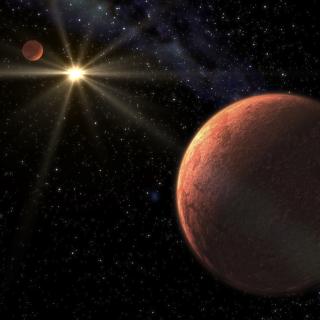Bibcode
Martín, E. L.; Lodieu, N.; Pavlenko, Y.; Béjar, V. J. S.
Referencia bibliográfica
The Astrophysical Journal, Volume 856, Issue 1, article id. 40, 8 pp. (2018).
Fecha de publicación:
3
2018
Revista
Número de citas
93
Número de citas referidas
84
Descripción
Determination of the lithium depletion boundary (LDB), i.e., the
observational limit below which the cores of very low-mass objects do
not reach high enough temperatures for Li destruction, has been used to
obtain ages for several open clusters and stellar associations younger
than 200 Myr—which until now has been considered the practical
upper limit on the range of applicability of this method. In this work,
we show that the LDB method can be extended to significant older ages
than previously thought. Intermediate resolution optical spectra of six
L-type candidate members in the Hyades cluster obtained using Optical
System for Imaging and Low Resolution Integrated Spectroscopy at the
10.4 m Gran Telescopio Canarias are presented. The {Li} {{I}} 670.8 nm
resonance doublet is clearly detected only in the two faintest and
coolest of these objects, which are classified as L3.5 to L4 brown dwarf
(BD) cluster members with luminosities around 10‑4
solar. Lithium depletion factors are estimated for our targets with the
aid of synthetic spectra and they are compared with predictions from
evolutionary models. An LDB age of 650 ± 70 Myr for the Hyades
provides a consistent description of our data using a set of
state-of-the-art evolutionary models for BDs calculated by Baraffe et
al.
Based on data obtained at the Gran Telescopio Canarias.
Proyectos relacionados

Estrellas de Baja Masa, Enanas Marrones y Planetas
Se investigan los procesos que conducen a la formación de estrellas de baja masa, enanas marrones y exoplanetas y caracterizar las propiedades físicas de estos astros en varias etapas evolutivas. Las estrellas de muy baja masa y las enanas marrones son probablemente los objetos más numerosos de nuestra Galaxia, pero no por ello están
Rafael
Rebolo López

Exoplanetas y Astrobiología
La búsqueda de vida en el Universo se ha visto impulsada por los recientes descubrimientos de planetas alrededor de otras estrellas (los llamados exoplanetas), convirtiéndose en uno de los campos más activos dentro de la Astrofísica moderna. En los últimos años los descubrimientos cada vez más numerosos de nuevos exoplanetas y los últimos avances
Enric
Pallé Bago